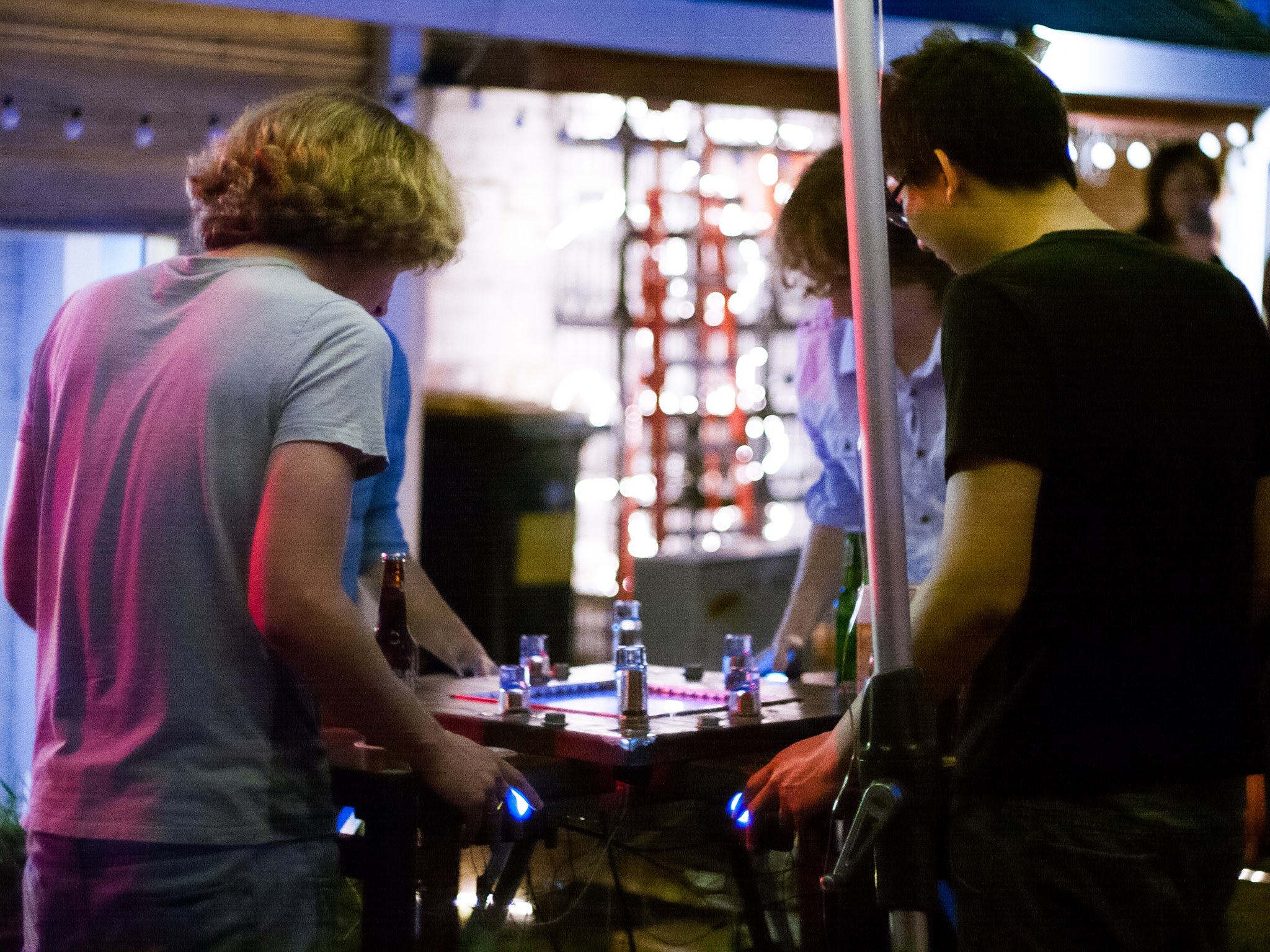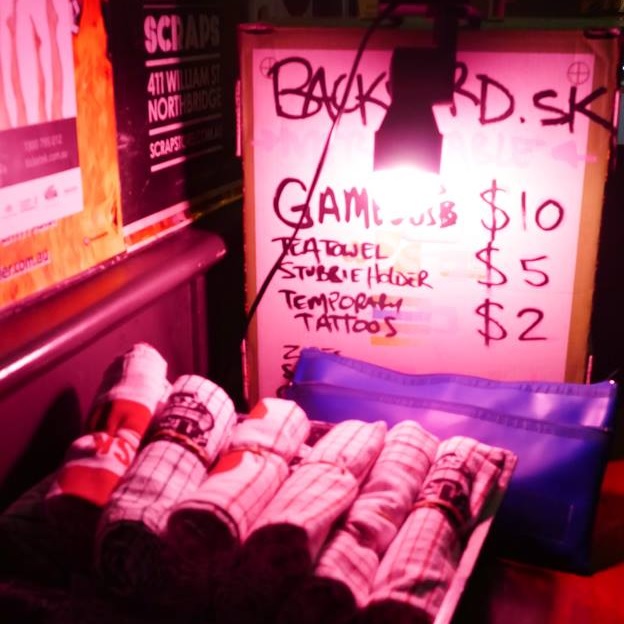I create spaces that are welcoming and support growth. This is my process when designing a venue or community hub:
1.
Value
 Origin.
Origin. Document the core concept behind the space, the elevator pitch. It will change, but it’s helpful to keep records of where it’s been.
Originality is overrated. The pitch does not have to be unique, it will become unique as you form it. Take pieces from spaces you like, steal ideas and techniques, copy codes of conduct and marketing material. It might feel like plagiarism, but the choices you make will generate an original venue.
Who’s coming? Who is your target audience? What do they need? Are you providing it?
Your practical value. Being handy with a screwdriver is one thing, but it won’t help navigate the liquor licence forms. Consider the practical aspects you’ll need help with and factor it into the budget.
Top
2.
Sustainability
 Income.
Income. Creating a space all year round requires a consistent and reliable income. Whether it’s self generating or reliant on external funding, a space requires resources, and those resources need to be budgeted. Finding an income stream is the foundation of a sustainable space.
Streams.There are many factors that help choose the type of income. The venue may favour an established business model, or the people behind the space might have skills in finding income from grants and funding. Switching streams is difficult, so consider it early and develop those related skills.
Human Resources. Maybe the space doesn’t have to be sustainable (see exhibitions). Whether it’s constrained by time or by money, it’s important to lay out the resources and keep personal sustainability in mind. Human effort is limited and burnout is real.
The Budget tells a story. Return to the elevator pitch with the budget in mind. Any clashes should be worked out as early as possible.
Top
3.
Openness
 Experts.
Experts. Reach out to other creators. Feedback from event organisers and venue managers is invaluable and should be documented for future reference. Some aspects will become more relevant in time, so keep notes.
Non-experts. Take everything so far to your audience. Don’t avoid the hard question “would you spend time/money on this?” Take more notes. Feel free to repeat these steps a few times.
Test. Playtest your space by organising multiple small events. This is a good way to build the base of a community, gather feedback and generate marketing materials for promoting the space down the track.
Be considerate. It seems simple, but being truly considerate of your audience is the only way to create an inclusive and accepting space. With the right intentions and considerations any issues can be worked out with feedback.
Opening night. Don’t worry about being professional from the getgo, instead focus on filling the space with supportive people like friends and family. There will be problems with logistics and operations, but if the room feels fun and loving none of that will matter.
Top
4.
Grow and Simplify
 Keep Talkin'.
Keep Talkin'. Talk to customers, talk about the space, talk about the offerings, talk about other spaces and offerings. Devise some metrics behind the scenes and keep it in mind. Let these conversations guide experiments with your content and see how those metrics shift.
Shift. Embrace emerging values. As culture shifts, follow it. No one expects you to lead, but there’s no excuse for not keeping up with the topics important to your audience. If in doubt, ask.
New frontiers.Seek parallel industries. As your values become clearer you’ll find other spaces in paralel industries, and you’ll be able to help each other. Chat and collaborate, combining resources and audiences.
Simplify. Along with finding what works, trim anything that doesn’t. Seek efficiency in the less important aspects of the space, and consider outsourcing any tasks that aren’t your specialty. Social media managers and photographers can often pay for themselves if the business owner gives them the chance.
Top
5.
Community
 Chill.
Chill. Communities shift. Don’t worry about people moving on. New audiences will replace the old, and bring new ideas. This is how venues survive, and fighting this flow will only bring disharmony and uncomfortable energy to the space.
Get out now and then. There’s life outside the space. Keep your social life strong, and keep looking out to new influences. Too many internal references and new audiences will feel excluded.
Keep stealing. Steal ideas from other spaces or communities, it will bring new audiences from those spaces and invigorate what you already have.
Commission and collaborate. Add a column to your budget for spending a portion of income on commissioning pieces from community members. Consider these pieces as marketing and optimise them to generate more income than they cost, thereby increasing the budget for the next piece.
Top
"A considerate space will grow a community, a community will bring sustainability, sustainability will allow creativity."
 Origin. Document the core concept behind the space, the elevator pitch. It will change, but it’s helpful to keep records of where it’s been.
Origin. Document the core concept behind the space, the elevator pitch. It will change, but it’s helpful to keep records of where it’s been. Income. Creating a space all year round requires a consistent and reliable income. Whether it’s self generating or reliant on external funding, a space requires resources, and those resources need to be budgeted. Finding an income stream is the foundation of a sustainable space.
Income. Creating a space all year round requires a consistent and reliable income. Whether it’s self generating or reliant on external funding, a space requires resources, and those resources need to be budgeted. Finding an income stream is the foundation of a sustainable space. Experts. Reach out to other creators. Feedback from event organisers and venue managers is invaluable and should be documented for future reference. Some aspects will become more relevant in time, so keep notes.
Experts. Reach out to other creators. Feedback from event organisers and venue managers is invaluable and should be documented for future reference. Some aspects will become more relevant in time, so keep notes. Keep Talkin'. Talk to customers, talk about the space, talk about the offerings, talk about other spaces and offerings. Devise some metrics behind the scenes and keep it in mind. Let these conversations guide experiments with your content and see how those metrics shift.
Keep Talkin'. Talk to customers, talk about the space, talk about the offerings, talk about other spaces and offerings. Devise some metrics behind the scenes and keep it in mind. Let these conversations guide experiments with your content and see how those metrics shift. Chill. Communities shift. Don’t worry about people moving on. New audiences will replace the old, and bring new ideas. This is how venues survive, and fighting this flow will only bring disharmony and uncomfortable energy to the space.
Chill. Communities shift. Don’t worry about people moving on. New audiences will replace the old, and bring new ideas. This is how venues survive, and fighting this flow will only bring disharmony and uncomfortable energy to the space.
